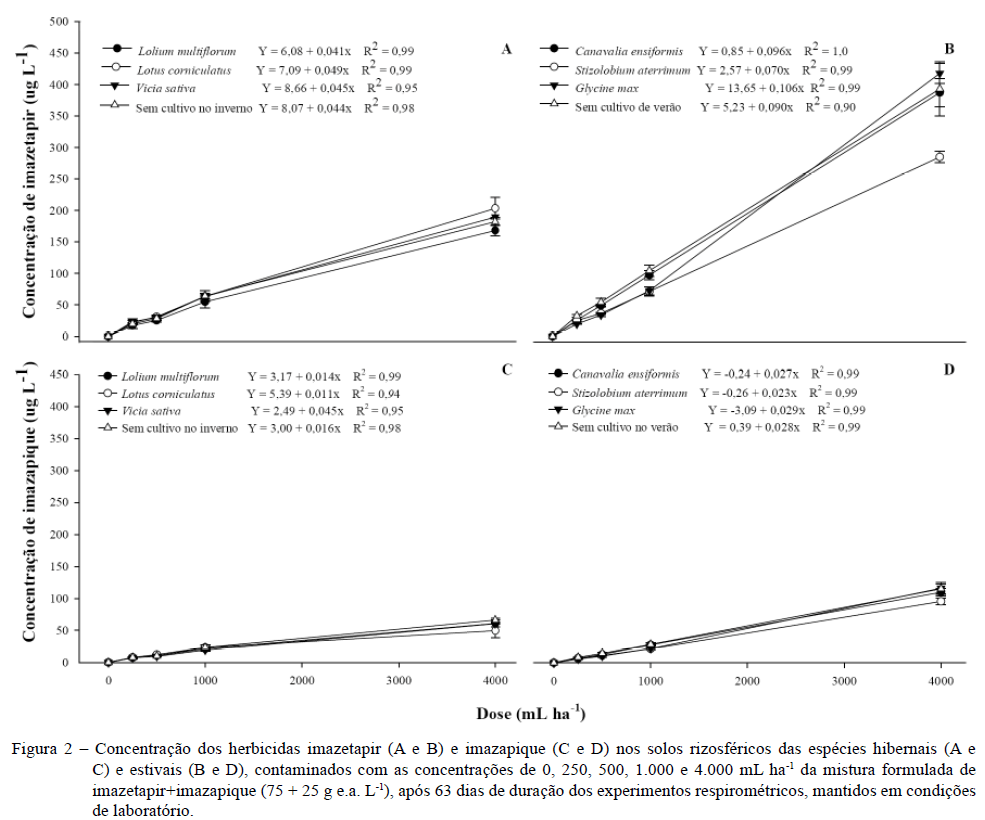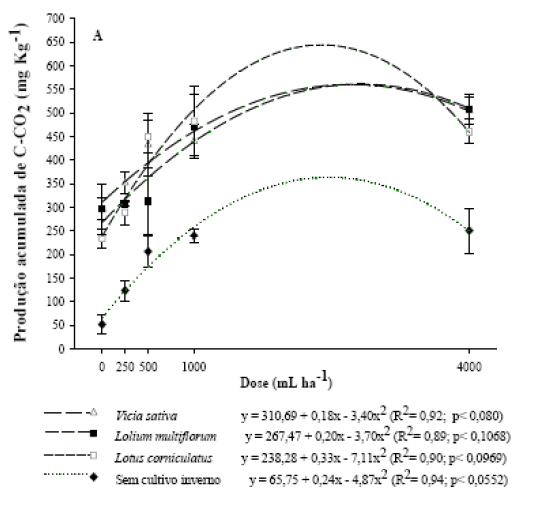Phytostimulation is a technique of phytoremediation that can be used to reduce the concentration of herbicides in the soil. It is necessary to select plants that stimulate the activity of the rizosphere degrading microorganism. The aim of this study was to evaluate the activity of the biodegradation of the herbicide compound formulated mixture of imazethapyr + imazapic (75 + and 25 g L-1) in rhizosphere soil from six plant species with potential for phytostimulation. Biodegradation of the herbicide in the rhizosphere soil of Canavalia ensiformis, Glycine max, Lolium multiflorum, Lotus corniculatus, Stizolobium aterrimum and Vicia sativa, and a control (soil without plant) was evaluated at doses of 0, 250, 500, 1.000 and 4.000mL 1 ha, by quantifying the production of C-CO2 of the soil and the degradation of the herbicide from the soil by liquid chromatography coupled to mass spectrometry. The production of C-CO2 of the soil after the contamination with the mixture imazethapyr + imazapic was higher in the rhizosphere soil of the six plant species when compared to soil not cultivated. The rhizospheric soil from Stizolobium aterrimum shouwed the highest degradation of the herbicide imazetapyr on the highest doses evaluated, being a promising specie for phytostimulation.
rice, rhizosphere; microorganisms; phytoremediation; phytostimulation



